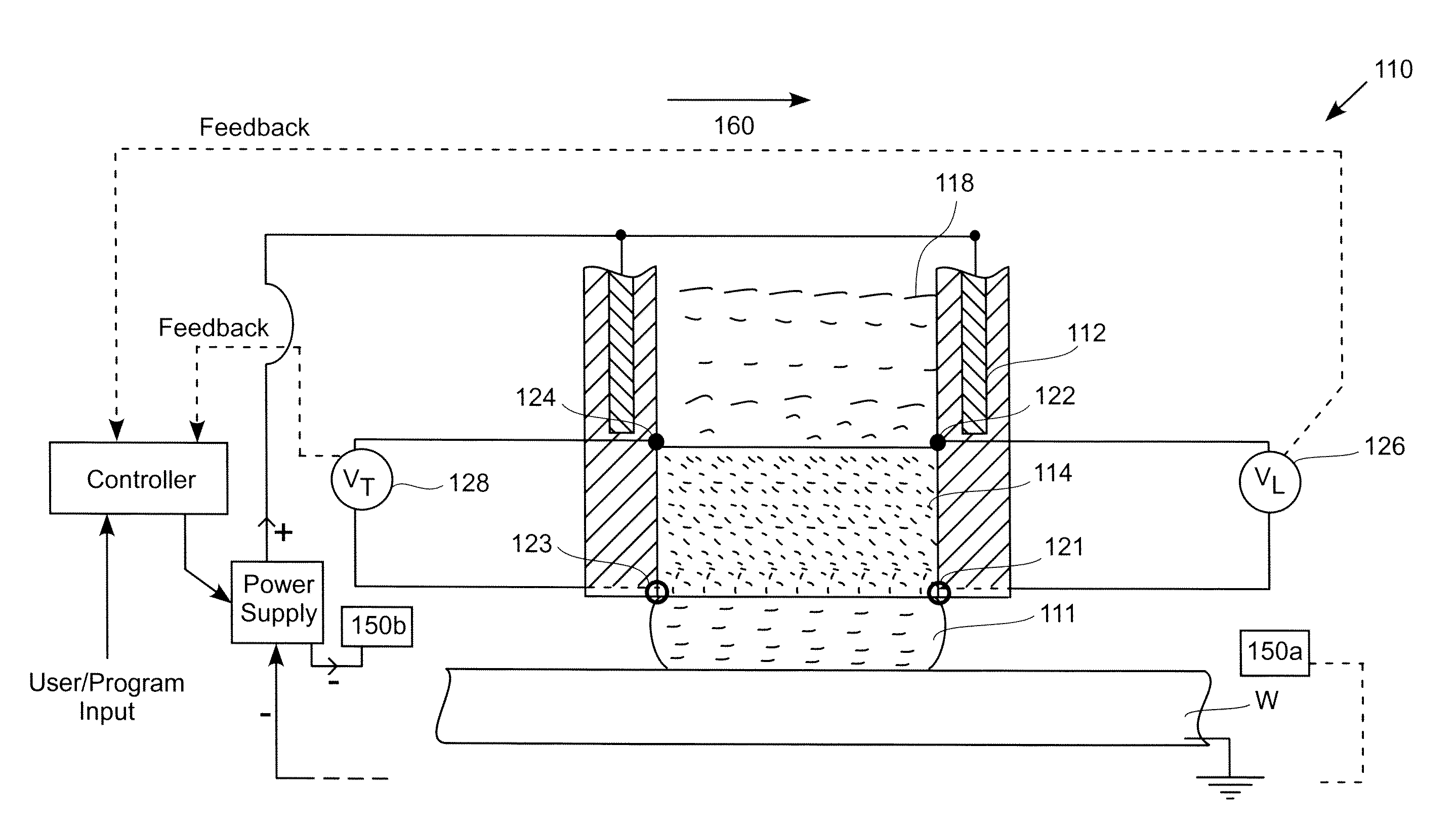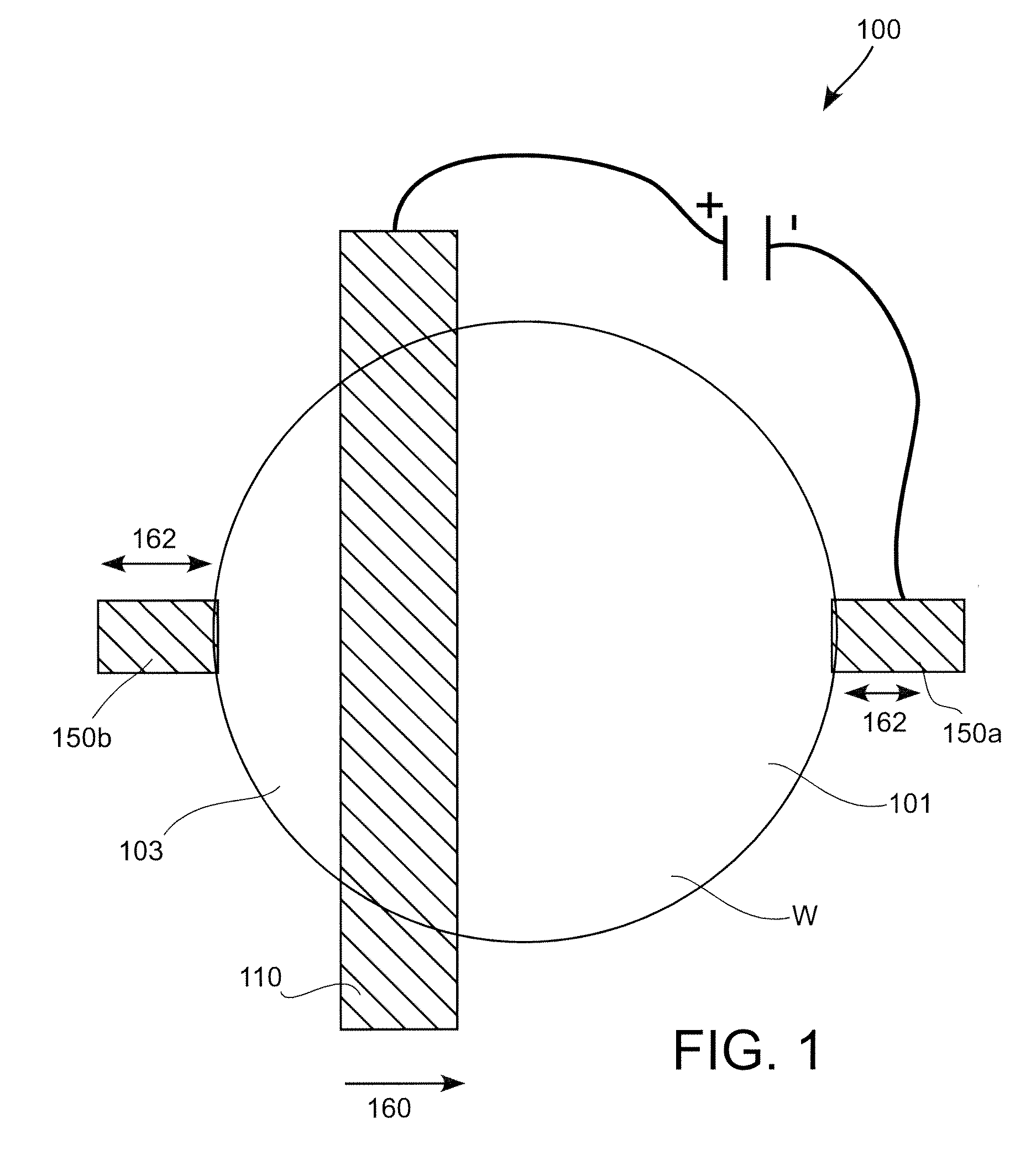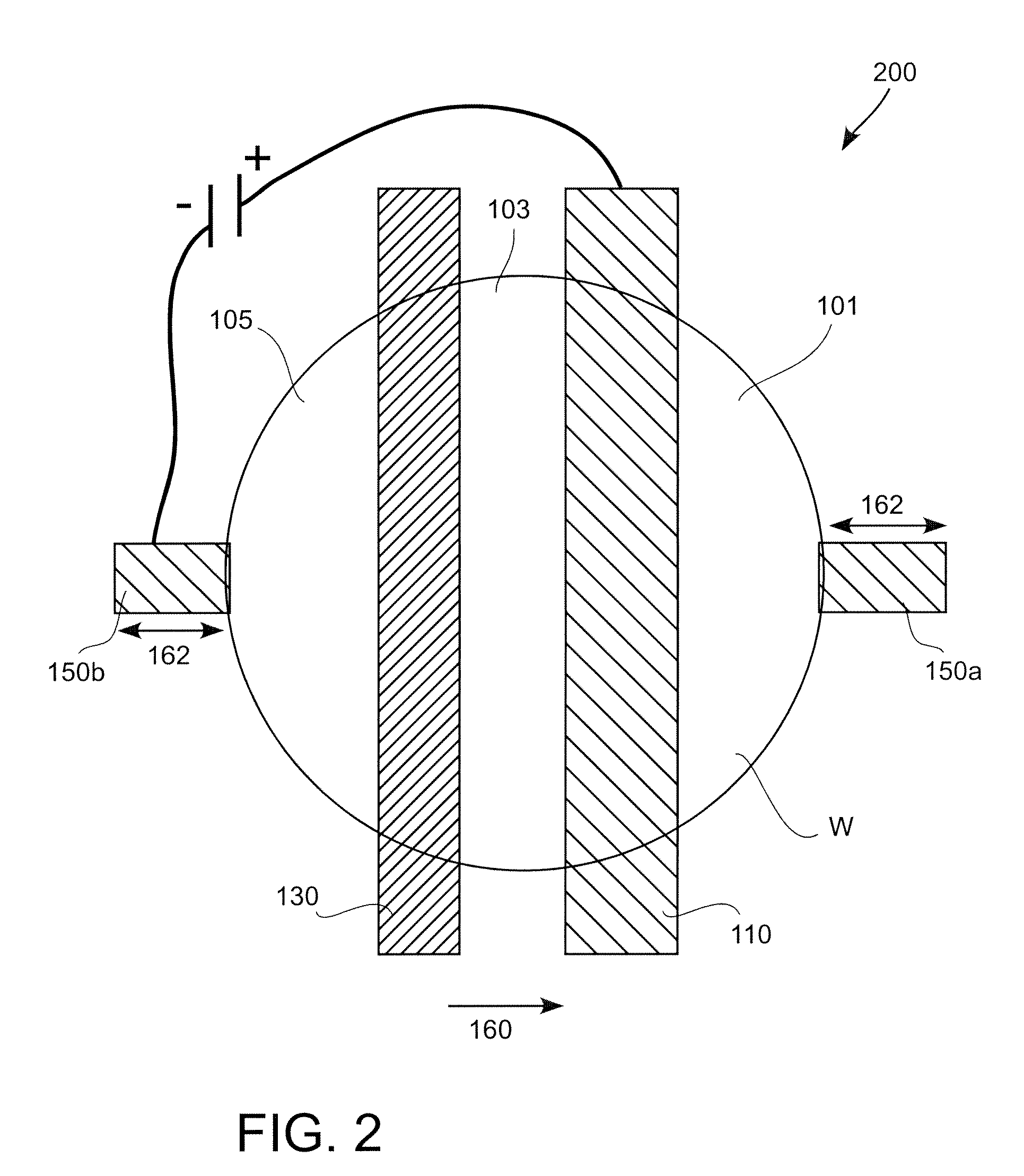Apparatus for Plating Semiconductor Wafers
a technology of semiconductor wafers and apparatuses, which is applied in the direction of manufacturing tools, electric circuits, electric circuits, etc., can solve the problems of limiting the productivity of plating operations, affecting the processing efficiency of semiconductor wafers, and affecting the throughput of semiconductor wafers, so as to reduce the active area of plating, improve chemical exchange, and reduce the total plating current
- Summary
- Abstract
- Description
- Claims
- Application Information
AI Technical Summary
Benefits of technology
Problems solved by technology
Method used
Image
Examples
Embodiment Construction
[0035]An invention, for methods and apparatuses for electroplating surfaces of a wafer, is disclosed. The present invention generally provides electrical contact in dry regions of a semiconductor wafer while producing uniform electroplating on barrier. Integrated rinsing processes are provided in an effort to reduce exposure time to electrolyte and consolidate processing. To ensure layer uniformity, the present invention implements single point dry electrical contact with a wafer while maintaining constant voltage, thereby evenly distributing current density across a wafer.
[0036]The following description provides further advancements in the field of plating techniques in the semiconductor arts. In the following description, numerous specific details are set forth in order to provide a thorough understanding of the present invention. It will be understood, however, by one of ordinary skill in the art, that the present invention may be practiced without some or all of these specific d...
PUM
| Property | Measurement | Unit |
|---|---|---|
| thickness | aaaaa | aaaaa |
| thickness | aaaaa | aaaaa |
| thickness | aaaaa | aaaaa |
Abstract
Description
Claims
Application Information
 Login to View More
Login to View More - R&D
- Intellectual Property
- Life Sciences
- Materials
- Tech Scout
- Unparalleled Data Quality
- Higher Quality Content
- 60% Fewer Hallucinations
Browse by: Latest US Patents, China's latest patents, Technical Efficacy Thesaurus, Application Domain, Technology Topic, Popular Technical Reports.
© 2025 PatSnap. All rights reserved.Legal|Privacy policy|Modern Slavery Act Transparency Statement|Sitemap|About US| Contact US: help@patsnap.com



